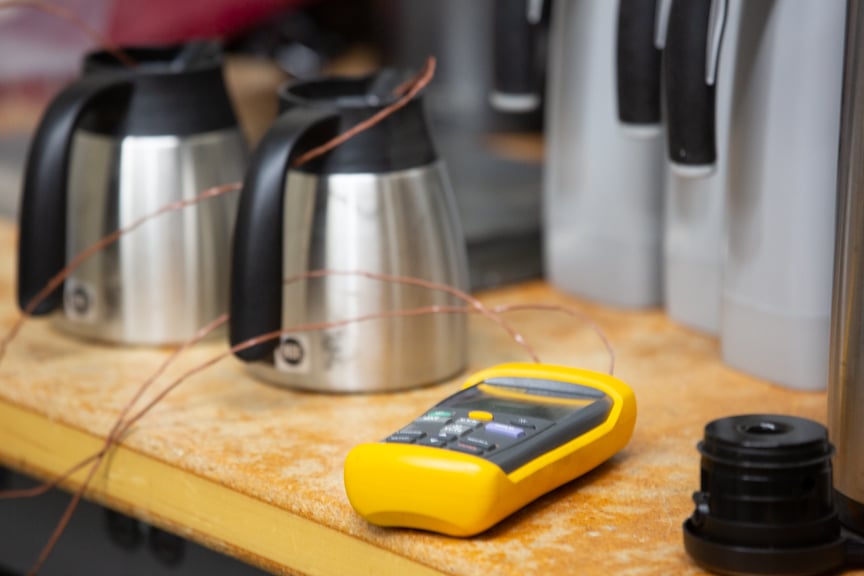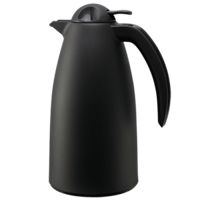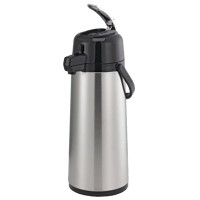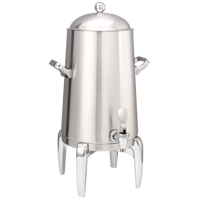The Science Behind Vacuum Insulation
When it comes to keeping your beverages at the perfect temperature, vacuum insulation is the secret weapon. This technology relies on the principle of blocking heat transfer to ensure your drinks stay hot or cold for extended periods.
Vacuum insulation minimizes heat transfer by creating an insulating barrier between the inner and outer layers of a vacuum-insulated container. With no air or gas molecules present, conduction and convection are virtually eliminated, keeping the contents at a stable temperature for extended periods. Additionally, the vacuum space reflects and absorbs radiant heat, preventing it from entering or escaping the container.
To understand the science behind vacuum insulation, it's essential to delve into the fundamental principles of heat transfer and the impact a vacuum has on them.
The Principles of Heat Transfer
When it comes to the types of heat transfer, there are three fundamental principles at play: conduction, convection, and radiation.
Conduction is the transfer of heat through direct contact between two objects at different temperatures. In vacuum insulation, the absence of air molecules eliminates the material that could conduct heat between the inner and outer layers. This means that the hot or cold temperature of the contents inside the container remains trapped within, without being easily transferred to the environment.
Convection, on the other hand, involves the movement of fluids or gases to transfer heat. With no air or gas molecules present in the vacuum space, convection is virtually non-existent, ensuring that the temperature of the contents remains stable for extended periods.
Lastly, radiation is the energy emitted by an object in the form of electromagnetic waves. However, the vacuum space acts as a barrier, reflecting and absorbing radiant heat, preventing it from entering or escaping the container.

Creating a Vacuum
Creating a vacuum-insulated product is a fascinating process that involves removing the air molecules from a space. This can be achieved through various methods, such as using a vacuum pump or a vacuum chamber. The goal is to create a completely air-free environment, which is essential for effective vacuum insulation.
The first step is to select an airtight container or vessel. This container should be made of a material that is capable of withstanding the pressure difference between the inside and outside of the chamber. Common materials used for vacuum chambers include stainless steel and glass, both of which have excellent sealing properties.
It's important to ensure that all openings or seams are tightly sealed. This can be done using specialized sealing materials such as rubber gaskets, O-rings, or glass beads. The container must be completely airtight to prevent any unwanted air molecules from entering or escaping.
Next, the air inside the container needs to be removed. This can be accomplished through the use of a vacuum pump. A vacuum pump creates a low-pressure environment by removing air molecules from the chamber. As the air is pumped out, the pressure inside the chamber decreases, creating a vacuum. Once the air has been removed and a vacuum is achieved, the container can be sealed off from the pump. This ensures that the vacuum is maintained and that no air molecules can re-enter the chamber.
Types of Vacuum Insulation
When it comes to vacuum insulation, there are two distinct types: glass and stainless steel. Glass vacuum insulation involves a double-walled glass container with a vacuum layer in between. This design provides excellent insulation, keeping your beverages at the perfect temperature for an impressive 6-8 hours when hot, and over 12 hours when cold. Glass vacuum insulation is known for its incredible heat retention and its ability to retain the flavor and quality of your drinks. A glass vacuum liner is fragile and must be protected from accidental drops or impacts. While glass vacuum insulation provides excellent heat retention and preserves the flavor of your beverages, it is important to handle it with care.
Glass vacuum-insulated products will come with a protective stainless steel or plastic outer shell, providing an additional layer of durability and protection. This outer shell acts as a shield, safeguarding the fragile glass vacuum liner from accidental drops or impacts, ensuring that your beverage container remains intact and functional for a long time. Additionally, always make sure to place your glass vacuum-insulated container on a stable surface to avoid any accidental tipping or falling. By taking these precautions, you can enjoy the benefits of glass vacuum insulation without worrying about its fragility.
On the other hand, stainless steel vacuum insulation relies on a double-walled stainless steel container with a vacuum layer in between. Stainless steel is durable, impact-resistant, and corrosion-resistant, making it perfect for both professional and home use. Stainless steel vacuum insulation performs exceptionally well, maintaining the ideal temperature of your beverages, ensuring they stay perfectly hot for up to 4-6 hours and refreshingly cold for over 12 hours. Unlike glass vacuum insulation, stainless vacuum-insulated products do not need an extra outer shell, making them more compact and space-saving. Stainless vacuum-insulated products come in wide a range of sizes, from a compact 0.3 liters to an impressive 5 gallons. The Flame Free™ Thermo-Urn™ from Service Ideas is the largest vacuum-insulated beverage dispenser on the market.
|
Alpha Carafe |
Eco-Air® Airpot |
Flame Free™ Thermo-Urn™ |
Vacuum Insulated Products
Service Ideas is a leading provider of beverage service solutions and offers an extensive range of vacuum-insulated carafes and airpots that are perfect for keeping your hot and cold beverages at the ideal temperature.
Their vacuum-insulated carafes and airpots are built with quality materials, ensuring maximum heat retention and temperature control. The inner and outer layers of these containers are separated by a vacuum, creating a highly effective insulating barrier that minimizes heat transfer. This means that your hot drinks will stay piping hot for hours, while your cold beverages will remain refreshingly chilled.
In addition to their excellent insulation properties, they feature easy-to-use pouring mechanisms, ergonomic handles, and spill-proof lids, making them perfect for both professional and home use. Explore their range today and uncover the impact that quality service ware can have on your beverage service. Whether you're hosting a brunch, a business meeting, or simply enjoying a cup of coffee at home, Service Ideas has the perfect vacuum-insulated container to suit your needs.




